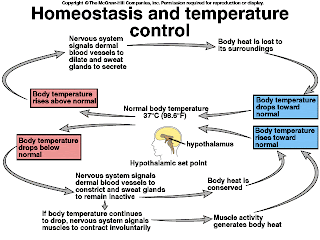Monday, December 13, 2010
Thursday, December 9, 2010
Chewing Lab
In this group lab we picked Gwynn to be the one to be the test subject. We placed two electro tabs onto her face to where the most muscle is used when she chews. We picked different types of food for her to chew with different textures. On the graph it shows each food item she ate. We decided to record how much work it took for her jaw muscles to chew each item.
Tuesday, November 9, 2010
Bone Fractures
Compound Fracture a fracture that penetrates the skin
Normal Fracture
Greenstick Fracture an incomplete fracture with a bend on the opposite side
Spiral Fracture a jagged fracture from a bone being twisted
Transverse fracture perpindicuar to the long axis of the long bone
Non Displaced Fracturewhe nbone ends and stay in ther normal position
Complete Fracture bone is broken all the way through
Compression Fracture bone is crushed
Depressed Fracture broken bone portion pressed inward
Epiphyseal Fracture seperates from diaphysis along epipyseal line
Friday, October 15, 2010
Article: The Body Shop
I have recently read this article about tissue enginerring skin it is the first so called "neo-organ" it was now approved by the U.S. FDA, and and a bunch of other scientist all figured out something to help tissue grow and combined it all together. This article basically describes how they were able to grow cartilage, bone, custom-made hearts, livers, breast, corneas, kidneys, bone marrow and bladder. To produce biologically useful tissues like cartilage and heart valves, tissue engineers must also pay special attention to the physical environment in which cells grow. It had become aparent that cells needed a more sterile environment than a petri dish in which to grow. Dr. Gail Naughton designed a bioreactor in which cells were subjected to a constant, unidirectional flow of fluid that brought nutrients in and wastes out. This helped make the cells grow a lot better. NASA soon figured out that cartilage or skin grow better under forces, and cells destined to to be part ofa three dimensional structure perform better in microgravity.
Scientist that have made this possible to create all of these body parts is great for us. It can help out many people that are close to dieing because they need a heart, liver , kidneys, exc. It also can help cancer instead of having the one you have they can make one for u and eliminate your cancer. I think it was a great idea to come up with a way to create these things. It is going to help many people in the future.
If you would are interested and want to read more in detail about the article her is the website http://www.pbs.org/saf/1107/features/body.htm
Scientist that have made this possible to create all of these body parts is great for us. It can help out many people that are close to dieing because they need a heart, liver , kidneys, exc. It also can help cancer instead of having the one you have they can make one for u and eliminate your cancer. I think it was a great idea to come up with a way to create these things. It is going to help many people in the future.
If you would are interested and want to read more in detail about the article her is the website http://www.pbs.org/saf/1107/features/body.htm
Wednesday, September 29, 2010
Homeostasis
Have you ever wondered how your body stays maintained and keeps going after a long hard work out? Thanks to homeostasis it keeps the body sustained and manages to keep it to how it was origanilly before you started your excersize. Homeostasis is the ability to maintain a relatively stable internal environment in an ever-changing outside world. As sooon as your body starts to change there are these three interdependent components of control mechanisms. The receptor monitors the environments and responds to change. The control center determines the set point at which the variable is maintained. The effector provides the means to respond to the estimulus. There are negative and positive feedback in homeostasis. In negative feed back, the output shuts off the stimulus. For an example the regulation of blood glucose levels. In a positive feedback system, the output inhances or exaggerates the original stimulus. An example of this would be regulation of blood clotting. Overwhelming of the negative feedback mechanisms may allow destructive positive feedback mechanisms to take over.
Thursday, September 16, 2010
Homeostasis Lab
For our homeostasis experiment we followed a number of steps. We measured Jill's elbows temperature while she was resting in class and it comfortably leveled out around 87 degrees. Then we measured her elbows temperature after she had been lifting weights for over 20 minutes. Her temperature continued to climb until it leveled out around 98 degrees. After sitting and cooling off for quite some time Jill's temperature finally lowered back down to 87 degrees. This is an example of negative feedback because her body was able to cool back down after getting so hot. In the end Jill's temperature finally reached homeostasis.




Subscribe to:
Posts (Atom)

































